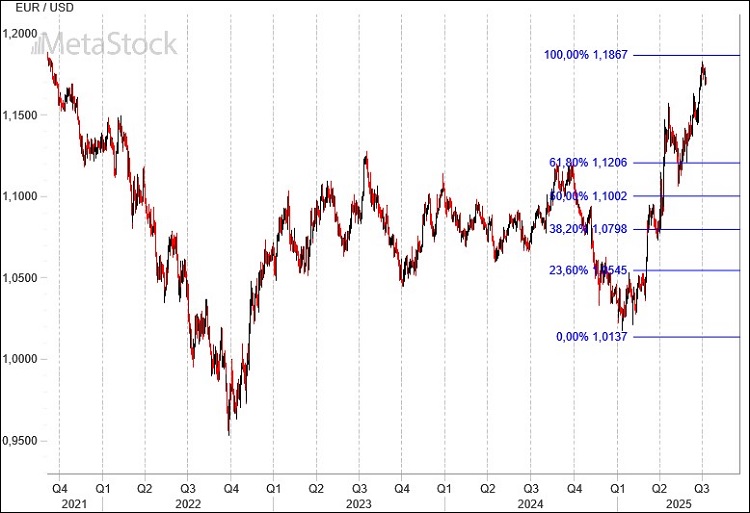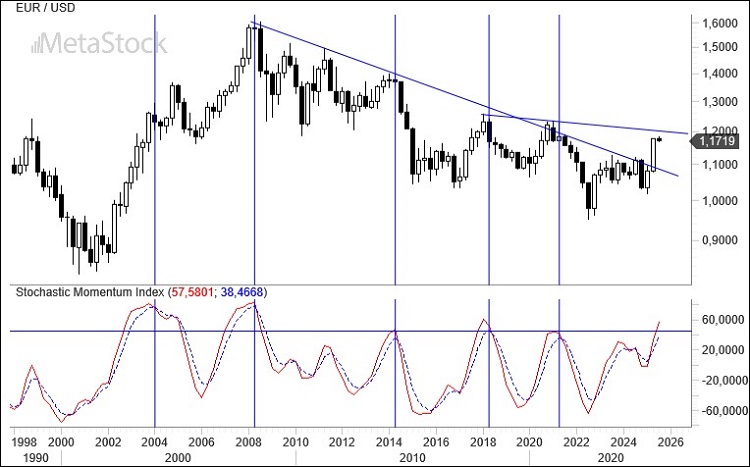- The tariff war is back in focus as the three-month suspension expires. Letters sent by the White House to several countries effectively reinstate the conditions of “Liberation Day,” forcing the Fed into a more cautious stance—and drawing Trump’s ire.
- Europe is closely watching the evolution of trade talks with the U.S., while the ECB is becoming increasingly cautious about further rate cuts.
- EUR/USD remains near its recent highs. The renewed tariff tensions risk deepening the dollar’s slide if uncertainty and distrust around the U.S. continue to grow.
Tariff Turbulence Complicates Rate Path on Both Sides of the Atlantic
In Europe, interest rates appear to have reached a floor—at least according to market expectations, which price in no more than 25 basis points of additional cuts over the next 12 months. This, despite repeated warnings from ECB officials: low growth, a strong euro, and weak investment levels may drive inflation dangerously close to 1%.
But for the euro, the bigger unknown is still tariffs. As of August 1, a growing list of countries will face new import duties on goods entering the U.S. The list already includes Japan, South Korea, South Africa, Canada, and Brazil. These nations have received advance notice that tariffs—ranging from 25% for Japan to 50% for Brazil—will soon take effect.
So far, only Vietnam and the UK have reached formal agreements (China remains at the declaration-of-intent stage), highlighting the current failure of Trump’s trade strategy. The effective tariff rate on goods entering the U.S. is now estimated at 17.6%—the highest since 1934 and a stark jump from just 2.4% back in January.
The dollar’s reaction has reflected the growing uncertainty around Fed policy. While markets had priced in a likely rate cut by September, Trump’s revived tariff campaign may force Powell to keep a hawkish posture in an effort to stem dollar outflows.
Minutes from the Fed’s latest meeting show that only two members supported a rate cut as early as July. The majority favored a cautious, wait-and-see approach—a stance sure to enrage Donald Trump once again.
Technical Analysis: EUR/USD Nears 1.20 as Overbought Signals Flash
The 1.20 level looks like the most likely next stop for EUR/USD in the coming weeks. But the currency pair has stalled just shy of 1.19—a price level where the 2025 rally from 1.01 now matches the scale of the 2022–2023 advance.
This technical symmetry, coupled with the psychological importance of the 1.20 threshold, could encourage a pause in momentum as traders digest recent gains.

EUR/USD still seems destined to test the 1.20 zone before making its next major move. The absence of any meaningful pullback—aside from a minor dip—suggests underlying strength that may only falter if market sentiment turns sharply negative.
Looking at the quarterly chart and using the SMI (Stochastic Momentum Index), we see the pair entering overbought territory, though a formal reversal signal has yet to emerge. Historically, this indicator has marked the formation of major tops in EUR/USD—but only within bearish contexts.
Back in 2004, when the broader trend was bullish, a similar signal merely preceded a mild period of consolidation—not a meaningful reversal.



Leave a Reply
You must be logged in to post a comment.